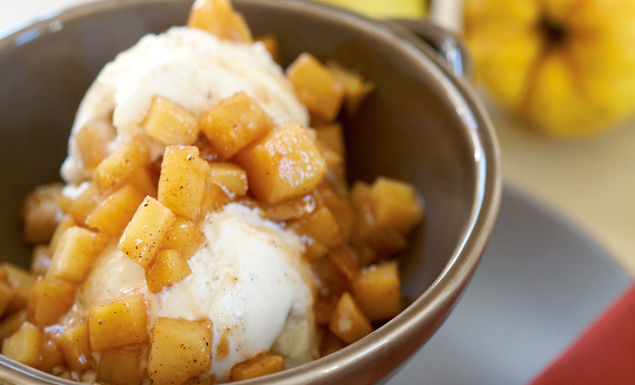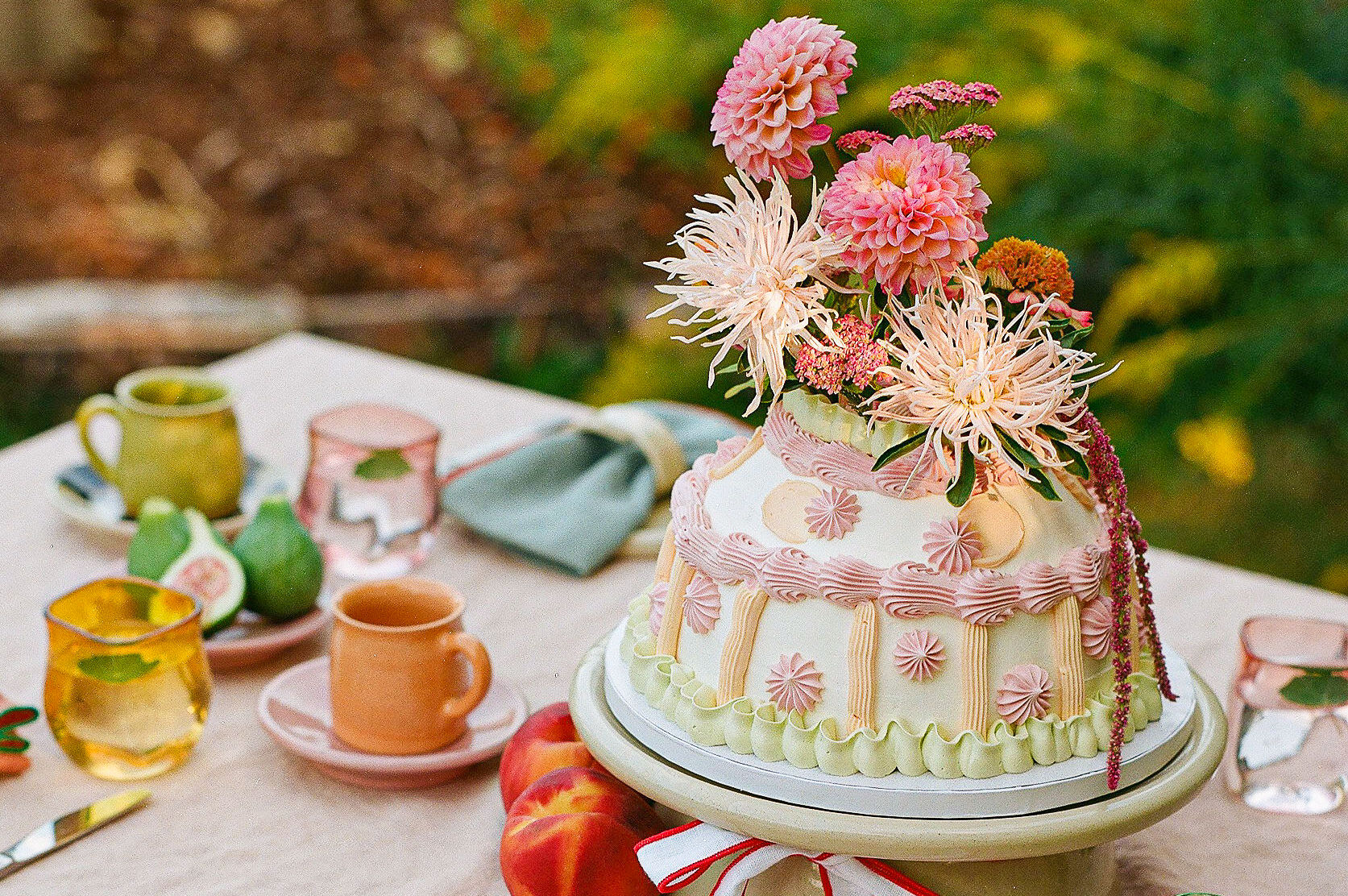Roasted Quince Compote

Image: Lara Ferroni
In his James Beard Award-winning book Classic Home Desserts, the late cookbook author and food journalist Richard Sax included an old English recipe from 1588 that called for “ten faire Quinces … an once of Sinamon [and] a pounde and a halfe of Sugare.” Strangely, after looking through a dozen cookbooks in search of a quince recipe, it was the first one I found.
But then, just as foods come into style, so too do they go out. This seems to have been the unfortunate fate of the lovely quince, a hard, yellow-skinned, round, sour fruit whose flavor and texture, like that of rhubarb or cranberries, becomes quite toothsome when cooked into pies, jams, compotes or tarts.
A predecessor of the apple, the quince is thought to have been cultivated first in ancient Greece and Rome, before spreading through the Middle East, into Europe and then colonial America. But today it is far from a staple here. The orchards planted by early colonists fell victim to disease in the 20th century. In fact, only 200 acres of commercially grown trees remain in this country—most of which are sold as ornamentals.
Luckily, the fruit’s local and national status is taking a turn for the better, thanks to Kim Hummer, a research horticulturalist at the USDA’s Agricultural Research Service in Corvallis, and her colleague Joseph Postman, who together are cultivating a collection of more than 100 quince clones from 15 countries. According to Hummer, their collection “guarantees that there will be more of these fruits getting to the American public in the next five to ten years.”
In the meantime, however, we cook with the quinces we’ve got, including the large, furrowed Smyrna variety from Turkey or the myriad of small, fuzzy fruits that hail from California, both of which can be found at stores like Zupan’s and New Seasons through December.
At Clarklewis, pastry chef Roxana Jullapat takes full advantage of quince season, creating desserts that highlight what she calls the fruit’s “tropical quality—a mixture of guava and pear and apple and pineapple.” This year she’ll roast quinces with vanilla and apple juice, and serve the compote with ice cream.
No matter how you prepare these fruits at home, they should be peeled, cored and chopped, then cooked down with a good deal of sugar and spice. “Quinces love brown sugar, butter, cinnamon, nutmeg—all the good things in life,” Jullapat says. Proof that, though our tastes change, as does the science that allows a fruit that’s faded to come back to the fore, some things stay the same: Though separated by more than 400 years, Jullapat’s recipe for quinces and that of the bygone London “hous-wife” are nearly—and deliciously—identical.
Roasted Quince Compote
When shopping for quinces to cook with, it’s best to buy them hard—a soft quince will be mealy. Some mottling of the skin is fine, as is some of the quince’s signature bumpiness, but quinces that aren’t completely yellow should be allowed to ripen in the refrigerator until they turn color and begin to release their perfume.
Serves 6-8
- 1 vanilla bean
- 8 tbsp unsalted butter (1 stick)
- 5 large quinces
- ¼ cup granulated sugar
- ½ cup dark brown sugar, firmly packed
- ½ tsp ground cinnamon
- ¼ tsp freshly grated nutmeg
- 2 tbsp calvados (apple brandy)
- ¼ tsp salt
- 1 tbsp apple cider vinegar
- ¾ cup apple juice
(1) Preheat oven to 425 degrees.
(2) Slice vanilla bean lengthwise with a paring knife and scrape the seeds into a saucepan.
(3) Add pod halves and butter and cook over medium heat, until butter develops a rich amber color and a nutty aroma, about 5 minutes.
(4) Remove from heat and discard vanilla pod halves.
(5) Peel, core and cut quinces into ¼-inch dice.
(6) Toss diced quince in a large mixing bowl with browned butter and vanilla seeds, sugars, cinnamon, nutmeg, calvados, salt, cider vinegar and ½ cup apple juice.
(7) Arrange mixture in a large roasting pan, cover with foil and bake for about 30 minutes, stirring every 10 minutes to ensure that the fruit is coated with pan juices. If liquid evaporates too quickly, add remaining apple juice.
(8) Discard foil and bake for another 10 minutes or until fruit starts to caramelize. Remove from oven and allow to rest for 5 to 10 minutes.
(9) Serve warm as is, over vanilla ice cream or with whipped cream. It will keep refrigerated for up to 2 weeks.




